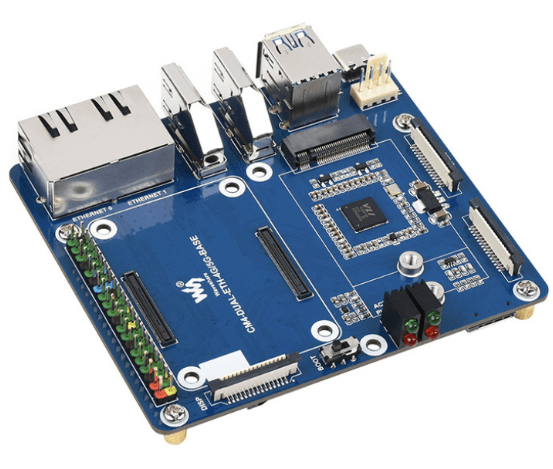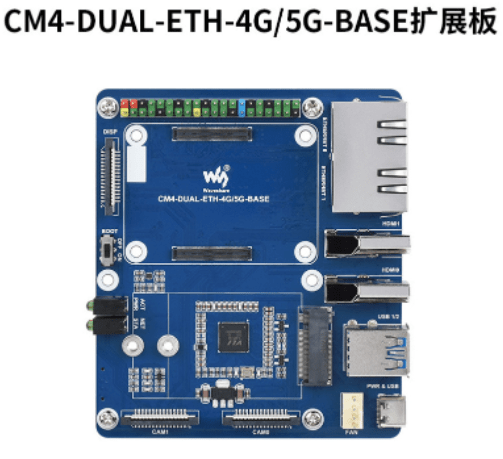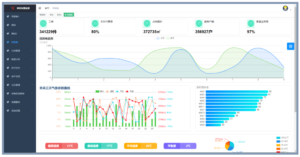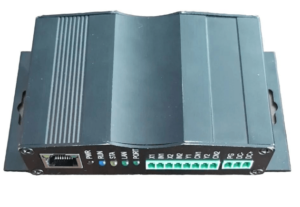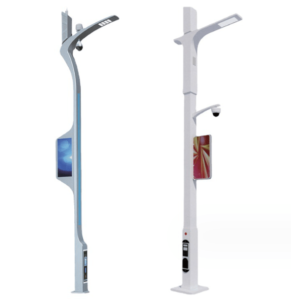Email: anwenqq2690502116@gmail.com
5G RedCap succeeded? Is 5G RedCap foreign or Chinese?
2023 may be a milestone year in the commercial development of RedCap.
However, with the experience of NB-IoT "starting a prairie fire" before and LTE Cat.1 "recruitment and courage", why does RedCap come here now?
How will it get on the stage? How will it develop afterwards?
The full name of RedCap is Reduced Capability (reduced capability), which is a relative concept.
RedCap mainly streamlines 5G speed and other capabilities to accurately adapt to low- and medium-speed IoT scenarios and improve the cost-effectiveness of equipment and networks, thereby accelerating the extended application of 5G IoT and realizing the large-scale development of 5G.
What is 5G RedCap? What are the 5G RedCap use cases?
Its standard was announced in June 2022 with the freezing of the 5G R17 standard, and then entered the stages of standard evolution, technology verification, terminal research and development, and commercial preview.
After experiencing the short-term stagflation brought about by the test of the epidemic, 2023, the first year after the full liberalization, may become a milestone year in the commercial development of RedCap.
On February 8, 2023, Qualcomm Technologies announced the launch of the world's first 5G NR-Light (also known as "5G RedCap") Snapdragon® X35 5G modem and RF system; Manufacturers Zhilianan and Lierda jointly released the world's first 5G RedCap low-power positioning module based on the 3GPP R17 positioning specification; on February 27, Quectel announced the launch of a 5G mobile phone based on the Qualcomm Snapdragon® X35 5G modem and RF system.
Raspberry Pi CM4 Dual Gigabit Ethernet Port 5G or 4G Expansion Board Computing Module Core Board USB3.0 IoT Motherboard
RedCap module Rx255C series; On February 28, China Unicom announced the release of the world's first universal 5G RedCap commercial module product NX307.
As we all know, in the entire Internet of Things industry, the preparation of mandrel manufacturers in the industry chain is usually regarded as the prelude to the upcoming landing of commercial terminals and applications.
Recently, China Telecom, China Unicom, Qualcomm, Quectel, Zhilian, Lierda and other major players in the industry chain have intensively released a series of confidence-boosting news, which obviously makes the industry look forward to the commercial use of RedCap.
However, there was NB-IoT "Starfire" before, and LTE Cat.1 "reckless". Why is RedCap now? How will it be on the stage? How will it develop afterwards? Faced with a series of problems, recently, Zhicifang Internet of Things think tank has launched a series of dialogues with operators, core mold manufacturers and industry alliances in the industry chain such as China Telecom, Zhilianan, Quectel, Lierda and 5G Internet of Things Industry Alliance, and hopes to give you inspired.
What 5G problems will the arrival of RedCap solve?
"In my opinion, RedCap is like a product of 3GPP's 'last resort' for 5G standards." This is Zhicifang's intuitive impression of RedCap when he communicated with Xie Yunzhou, secretary general of the 5G Internet of Things Industry Alliance.
Raspberry Pi DIY Experimental Teaching Equipment
Although it sounds a little helpless, it is enough to see the hope placed on RedCap by the whole industry chain. In fact, if we interpret this sentence more clearly, it should be that "the current application level and overall ecological scale of 5G are far from reaching the expected goals."
Although the slow progress of 5G application scale is limited by many objective factors, such as the scale of network deployment, the pace of technical standard evolution, and the pace of upstream mandrel manufacturers...
But the above conclusions are not the words of Xie Yunzhou alone. In the process of communicating with people in the chain, almost all got similar views. When it comes to the "culprit" that specifically restricts the further development and popularization of 5G, everyone invariably points to the current high cost of 5G.
Yao Li, senior product director of Quectel Communications, also told Zhicifang that cost has always been an issue that the industry has been very concerned about.
Raspberry Pi USB3.0 IoT Motherboard
The development of 5G can be said to be in full swing today, but it is undeniable that for some application scenarios, the extreme performance of 5G brings Problems such as high cost have affected its business process and application coverage, and its development prospects have been affected to a certain extent.
In fact, as early as 2020 to 2021, the industry chain has formed a consensus-to increase the scale and lower the price. Generally speaking, there are usually three ways to achieve this goal: the first is to promote the popularization of new technologies by encouraging everyone to use them from a policy perspective; the second is to use operators as subsidies to drive the enthusiasm of the industrial chain The third is to innovate from a technical point of view, such as Cat.1 for 4G cuts, RedCap for 5G cuts, etc.
Although compared with the third method, the first two methods can also achieve the goal of "increasing the scale of the industry and reducing the cost price", but I am afraid that only the participants have a deep understanding of the ups and downs.
In contrast, the third method has been tried as early as May 2021 and has achieved good results. At that time, China Unicom and several manufacturers released the industry's first low-cost 5G module - Yanfei 5G module. One of the biggest highlights of this module is that the price including tax is only 499 yuan.
teaching physical computing with raspberry pi and python
The reason why we were able to bring the price of 5G modules within the 500 yuan mark in just two years of 5G construction is that China Unicom has made many innovations on the basis of general-purpose modules, such as reducing basic components and design costs through tailoring, At the same time, enhancements are made for certain specific scenarios.
With the freezing of the RedCap standard, core mold manufacturers will be further encouraged to carry out more streamlined designs on 5G terminals. For example, RedCap uses a smaller spectrum bandwidth, and the bandwidth in the Sub-6GHz frequency band is only 20MHz, while the traditional 5G is 100MHz. 3GPP R18 further plans to reduce its bandwidth to 5MHz.
In addition, RedCap has also reduced the number of transceiver antennas, reduced the number of MIMO layers, and introduced energy-saving measures such as eDRX, etc., which will help the core mold products to further achieve the goal of cost reduction.
For example, the world's first low-power 5G RedCap positioning module product released by China Telecom Tianyi IoT and core mold manufacturers Zhilianan and Lierda this time is based on the 3GPP R17 low-power high-precision positioning specification and adopts a single-mode design.
At this stage, the general-purpose 5G module needs 400 to 500 yuan even after subsidy and price reduction. However, according to the knowledge of the three responsible persons of Zhici, the cost of the RedCap positioning chip designed and manufactured by Zhilianan is currently only 5G mobile phone chips on the market. one-tenth of the cost.
Of course, in addition to lowering the price of the module itself, the industry chain is also promoting the reduction of the overall cost of 5G and RedCap in other ways. For example, Quectel provides supporting services such as machine design consultation, hardware testing, and machine certification services, etc. , from the side to reduce the cost of commercialization of the customer's complete machine.
While providing overall technical solutions, Lierda is promoting close cooperation with surrounding suppliers, establishing a complete supply system based on RedCap, and promoting products at the module level to quickly enter the expectations of industry customers by improving the integration of the industrial chain. scope.
Tian Zhiyu, manager of Lierda's 5G business department, told Zhicifang that with the increase in the popularity of RedCap, the price of modules will continue to approach the price of 4G modules in the future, which will further support 5G application innovation.
But at the same time, he also emphasized that if RedCap only has an advantage over the current 5G module price, it may not be widely accepted by the market, and the industrial chain will not be able to "stable and long-term". The more important advantage of RedCap lies in its new 5G features. , which can meet the needs of vertical applications in thousands of industries.
What impact has RedCap had on IoT?
If the high price is only the "surface" that reflects the problem, then the value mismatch between supply and demand is the "inside" of the problem.
The biggest difference from previous network deployments is that the Internet of Things is highly fragmented. The application scenarios of the Internet of Things are complex, and the demands of various industries and even individual customers are also different, which leads to different requirements for actual users on the network indicators. This has also been confirmed in the conversations between Zhicifang and industry insiders—everyone mentioned that there is a mismatch between network speed and scene requirements in actual scenarios.
For example, in a highly automated smart factory, although 5G's ultra-large bandwidth, ultra-low latency and high reliability can meet the needs of precise control of industrial robots.
However, there are often a larger part of the equipment in the factory that does not use the high rate of eMBB, such as video transmission, industrial sensing equipment, and so on. At the same time, these devices often require higher performance than mMTC (NB-IoT and eMTC), and lower latency connection support than 4G networks.
Carriers are one of those who benefit from being inspired by RedCap. Wang Zhicheng, director of China Telecom's Internet of Things Open Laboratory, believes that promoting RedCap applications can not only reduce the cost problems faced by 5G applications, but the more important aspect is to realize its value and fully integrate it into UC in various industries. And this will eventually lead to the real transformation of the role of operators in the era - from "operators' Internet of Things" to "operators of the Internet of Things".
For example, the three major operators are now expanding their customized network services. According to the traditional thinking of network construction and delivery, most of the projects can only stay at the "network construction" level. Once the network is built, it means that the entire service In the end, there may not actually be an intersection with the client's business.
As for digital empowerment, operators not only need to coordinate network deployment, but also need to consider deeply integrating their own CT capabilities with customers' OT services, so as to truly embed them in vertical industries. 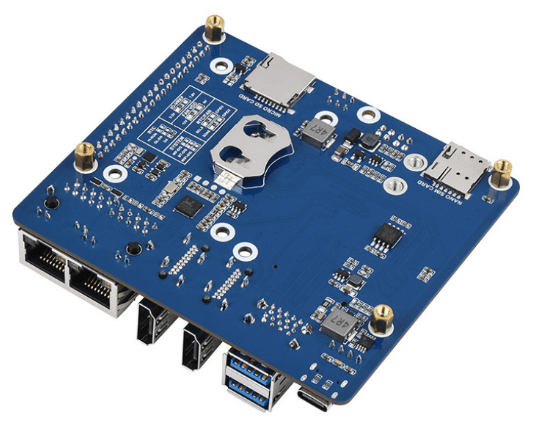
USB3.0 IoT Development Motherboard - Raspberry Pi DIY Experimental Teaching Equipment
The promotion of RedCap will prompt operators to change their thinking. Through the China Telecom Capability Rubik's Cube platform and RedCap, customized services will be proposed, and specific industry application scenarios will be selected one by one, and the uplink and downlink, time delay, jitter and The positioning accuracy and other requirements are strictly and accurately defined, so that this 5G customized network can more accurately meet the needs of vertical industries. Behind this is not only simple product provision, but also a series of tasks such as operation and maintenance, service, customer service, and the launch of the industrial chain.
Of course, based on the characteristics of the Internet of Things and the premise of large-scale network connections, operators not only need to break up the entire Internet of Things, but also need to integrate the needs of the same industry, find the greatest common divisor, and provide relatively standardized atomic ability. At present, China Telecom has carried out scenario verification based on RedCap for the five major industries of port, electric power, steel, mining and chemical industry, laying the foundation for the deployment of RedCap as soon as possible.
In the future, such benefits will continue to be transmitted to all parties in the industry chain. Operators, equipment manufacturers, terminal manufacturers, and application integrators will cooperate more and more closely and continue to penetrate into vertical industries. Create and interact.
Yao Li told Zhicifang that each industry and each type of product has its own demand characteristics for accessing the network. The efforts of operators and mandrel manufacturers will continue to promote RedCap from "usable" to "easy to use", and finally pass the The refined design works better on the 5G To B ecosystem.
What kind of attitude will RedCap develop?
At present, the industry has already summarized the pyramid demand model of "high, medium and low" three different categories of rates of "10%-30%-60%" for the Internet of Things, and reached a consensus. The cellular IoT technologies represented by NB-IoT and Cat.1 rely on mature technologies and industrial chains, and have an annual growth scale of hundreds of millions of connections in China. Therefore, this has also caused a little concern in the industry about the development of RedCap.
In fact, for each technology, based on the different classes it serves and the industry applications it applies to, it will also have its own unique living space, which is the premise of each new technology. What's more, RedCap also has a big killer feature - 5G native features, which is a capability that NB-IoT, Cat.1 and even 4G do not have, which also makes RedCap have basic advantages in many industry application scenarios.
For example, in the power grid environment, RedCap can support differential protection with uRLLC ultra-low latency; while in a separate industrial park or smart factory, based on the requirement that the data does not leave the park, RedCap cooperates with the 5G private network UPF sinking solution to be able to operate on 5G When a network is deployed, a mode of isolation from the outside world is established to ensure data security - these are not available in 4G.
In addition, RedCap is also adding new features to further meet the challenges faced in actual application scenarios. For example, add positioning function.
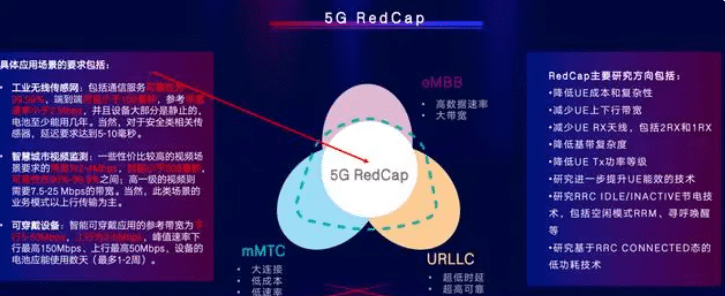
5G RedCap succeeded? How is it going now?
In the R17 standard, the positioning accuracy target has been further improved from 3 meters indoors and 10 meters outdoors to the sub-meter level, and the positioning delay requirement is less than 100ms; in the industrial Internet of Things scenario, the positioning accuracy error of R17 is required to be less than 20cm.
Wang Zhijun, senior vice president of marketing and sales of Beijing Zhilian Technology Co., Ltd., told Zhicifang that in fact, in 5G To B projects, the demand for positioning on the terminal side is stronger, and the number is also larger. The RedCap based on 5G characteristics will turn the "dumb terminal" in the IoT terminal into a "terminal that can speak".
From the current point of view, the positioning market is already a state of contention among a hundred schools of thought, and there are different positioning service solutions for indoors and outdoors. For example, outdoors, the technology based on satellite positioning has long been mature and has been widely used. Indoor Bluetooth AoA positioning, UWB positioning and other technologies have also attracted attention along with market demand and application innovation.
But from the current point of view, both indoor and outdoor positioning still cannot achieve the coverage of one network, and it needs to be realized by integrated positioning technology, such as GNSS+Bluetooth AoA or GNSS+Wi-Fi. When the application scenario has data transmission requirements such as returning location information, it is also necessary to bind other communication technology solutions, such as the positioning method of Bluetooth AoA+4G fusion, of which 4G can be used for information transmission.
However, if 5G ready is taken as the premise, the problem of indoor and outdoor positioning connection can be easily solved by deploying a 5G network, and at the same time, there is no need to add other auxiliary technologies for communication. In addition, 5G-based positioning will greatly reduce deployment costs, because ready-made 5G indoor and outdoor base stations can be reused without repeated network deployment and site construction, avoiding a large amount of labor cost investment. Finally, a large number of energy-saving technologies introduced by RedCap will realize the low power consumption requirements of 5G positioning, which will also reduce a large number of subsequent operation and maintenance costs.
What kind of commercial rhythm will RedCap present?
There is no doubt that 2023 will be the first year of commercial use of RedCap. Wang Zhicheng told Zhicifang that the commercial development of RedCap should be faster than expected. According to previous industry estimates, the release of RedCap will probably wait until 2024, but from the market point of view, it has clearly exceeded this expectation, and judging from the current pilot and customer response, it will even be more optimistic than this speed.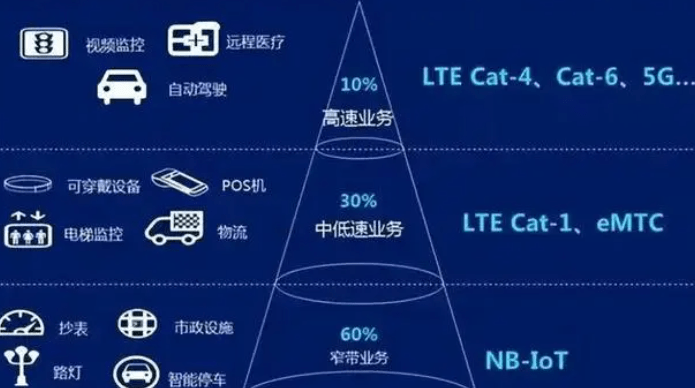
Is 5G RedCap foreign or Chinese?
In terms of chips, Zhilianan will mass-produce 5G RedCap high-precision and low-power positioning chips in the third quarter of this year. Starting from April, it will conduct small-batch experiments in several typical B-end scenarios. Do sample deployment, and then carry out large-scale shipments after testing and debugging.
In the future, in the middle of 2024, Zhilianan will also develop software for the digital transmission function of RedCap, so as to truly realize the integrated capability of chip positioning + communication. At present, Zhilianan is actively cooperating with the three major operators, following the implementation of the operator's 5G private network, and ultimately driving the promotion and popularization of RedCap from point to surface.
In terms of modules, Quectel has officially released its Rx255C series of 5G modules in early 2023, and has designed two versions including RG255C and RM255C for the global market. At present, this series of products is in the stage of intensive R&D and perfection.
It is expected that the first batch of module engineering samples will be provided in the second quarter of this year for testing by customers in vertical industries. It will officially enter the commercial stage by the end of this year, fully meeting the market demand for RedCap.
In terms of Lierda, in addition to cooperating with Zhilianan to develop 5G RedCap high-precision and low-power positioning modules, it will also aim at the research and development of RedCap modules with digital transmission functions, and is expected to release engineering samples by the end of this year.
However, although the industry's calls for commercial use of RedCap are gradually increasing, it still needs to be viewed rationally. Tian Zhiyu said that the high voice means that the industry has high expectations for RedCap, which is the driving force leading the industry forward, but any industry needs time to cultivate, especially in the industrial field.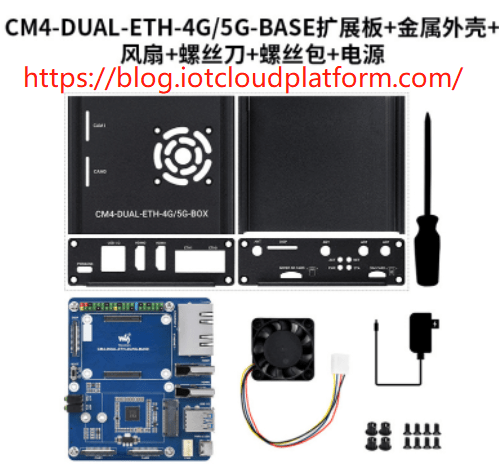
IOT Raspberry Pi
Based on higher production safety requirements, in the information upgrade of the industrial field, it actually takes a long time to verify from product introduction to scale explosion. Even in the automotive field, the cycle will be relatively longer, generally around 2 years.
According to the law of network intergenerational upgrades, perhaps one day in the future, 4G networks will usher in "glorious retirement". As an important part of the 5G system, RedCap is also expected to fully undertake the important task of connecting medium and high-speed scenarios. We still can't tell when that day will be, or even question whether it will come. But it is conceivable that RedCap will "continuously grow and explode at any time".
Is 5G RedCap foreign or Chinese?
China Unicom took the lead in establishing the industry's first 5G RedCap industry alliance.
The industry alliance was led by China Unicom and formed voluntarily by China Huadian Corporation Tianjin Branch, COOEC, Huawei and other enterprises. It is an industrial organization integrating union, professionalism and industry.


